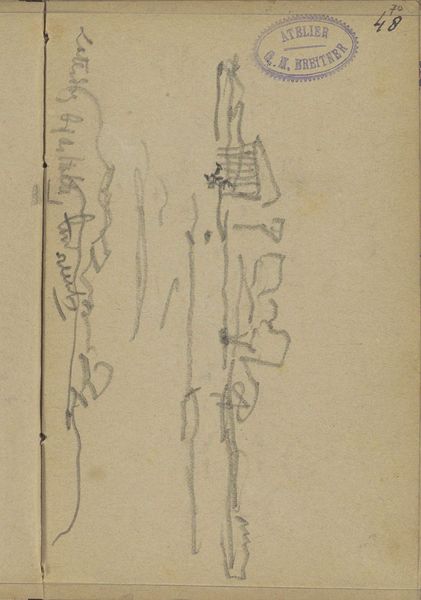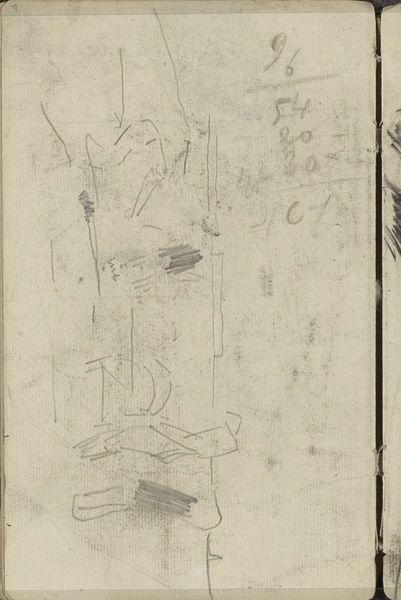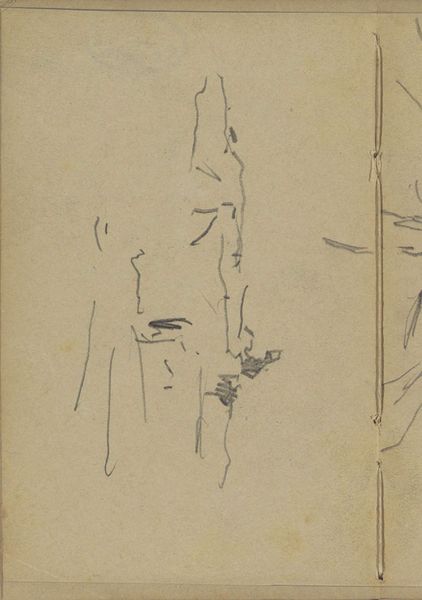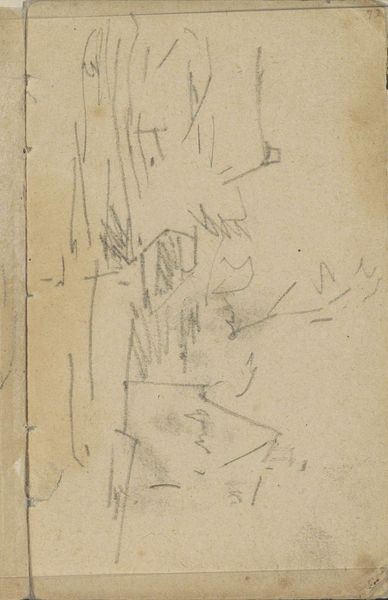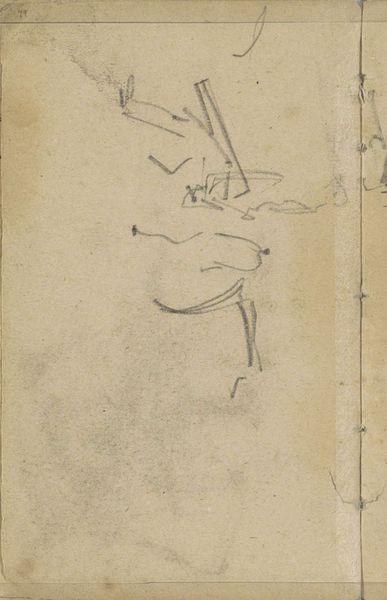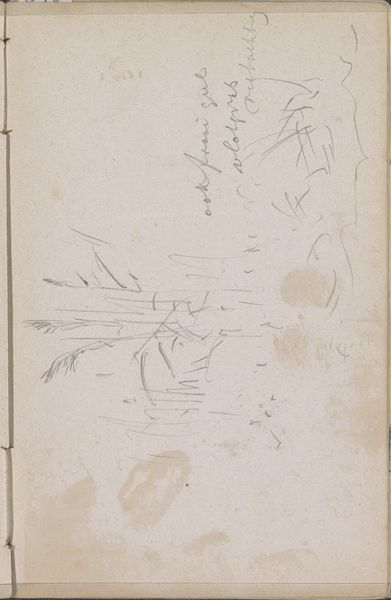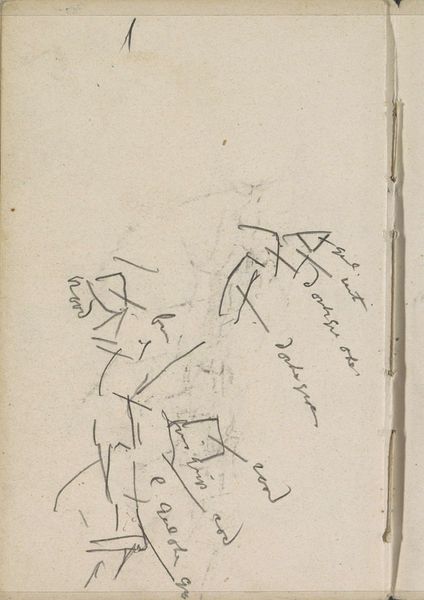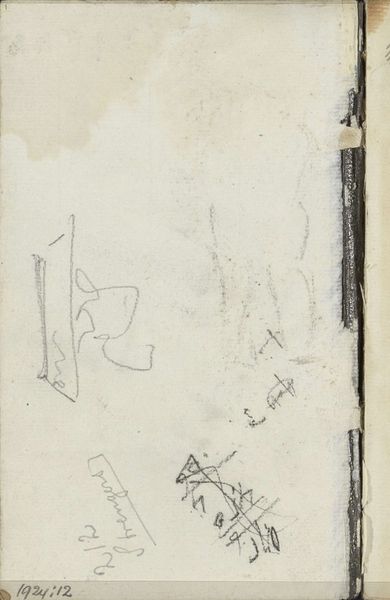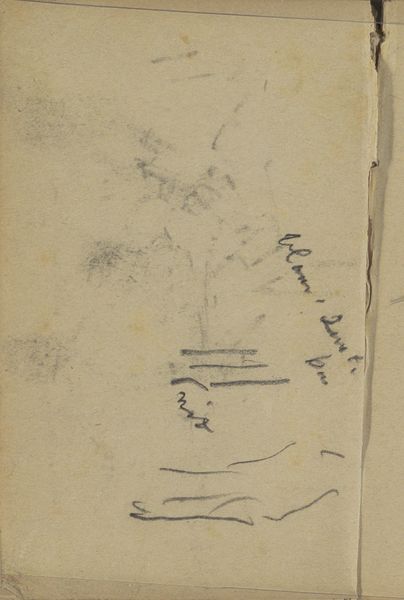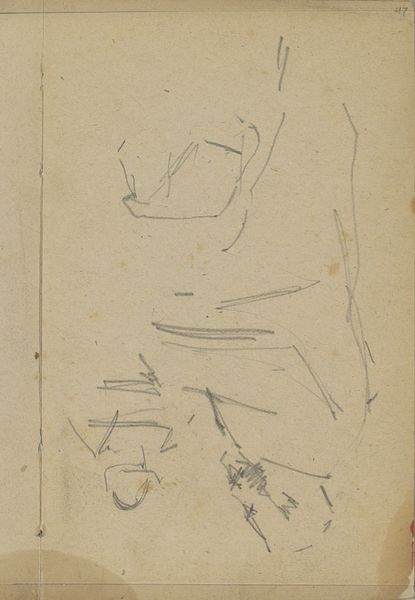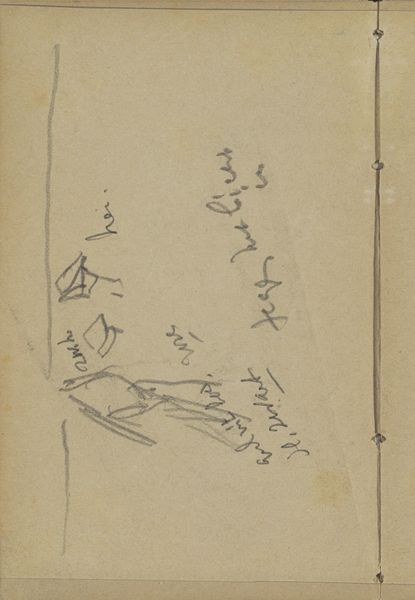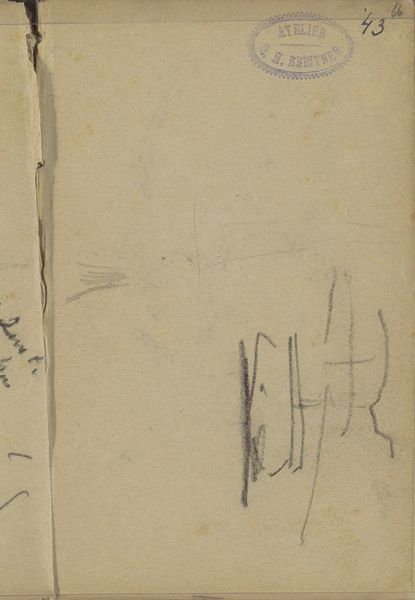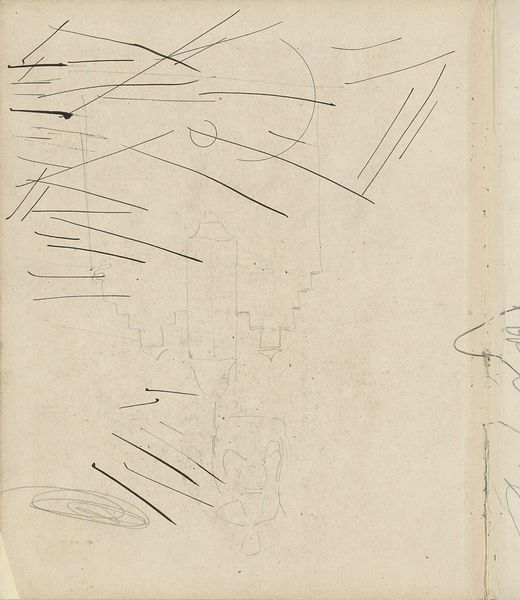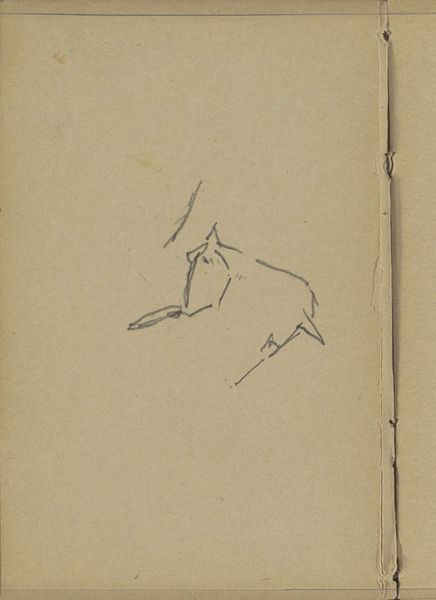
Copyright: Rijks Museum: Open Domain
Editor: This is Isaac Israels’ sketch "Ruiter, op de rug gezien," which roughly translates to "Rider, Seen From the Back." Created sometime between 1887 and 1934, it's a graphite drawing on paper. I’m struck by its simplicity and how much movement Israels manages to convey with just a few lines. How do you interpret this work? Curator: The rapid, almost urgent lines here speak to the burgeoning industrial age and the changing relationship to the animal. Note how the rider is viewed from the back – obscuring their face and placing the emphasis on the physical exertion. Israels invites us to contemplate not only the act of riding, but also how class and labor intersect with technological advancement and a changing sense of human relationship to labor. It reminds us that this subject is an intersection of human labor, the animals' experience, and socioeconomic factors in the face of the machine. What feeling do you think the artist intended to create with this specific focus? Editor: I see your point. Focusing on the back indeed deemphasizes the individual and puts more weight on labor and societal changes. I guess the quick strokes evoke the constant drive to modernize, overshadowing the riders as humans. The sketch, then, captures both progress and loss, making it melancholic. I had not considered that! Curator: Precisely! It is easy to see the past through rose tinted glasses. It is our role as critics and students to continue this process of inquiry so we may challenge, enrich and progress our own understanding of human histories. Israels work is ripe for rediscovering the changing dynamics of its historical and theoretical context.
Comments
No comments
Be the first to comment and join the conversation on the ultimate creative platform.
